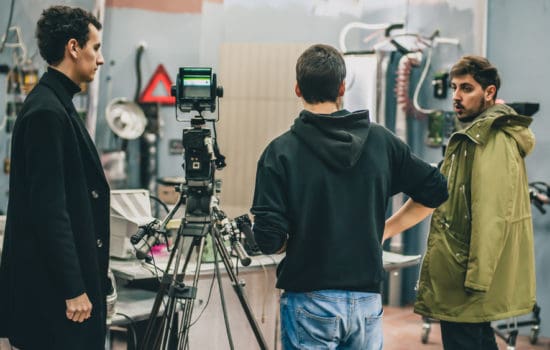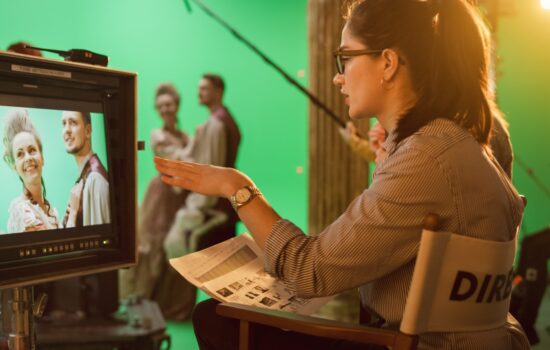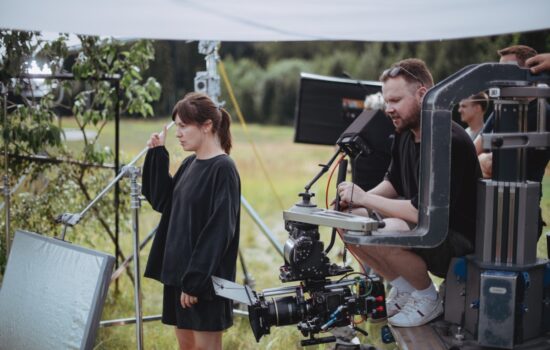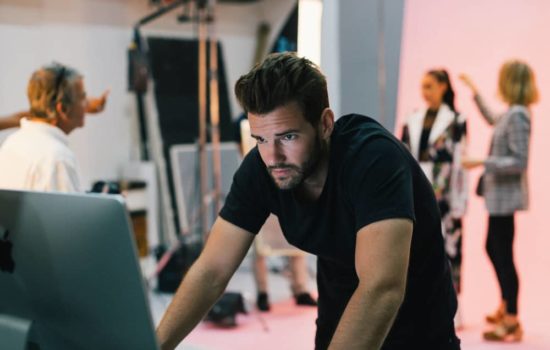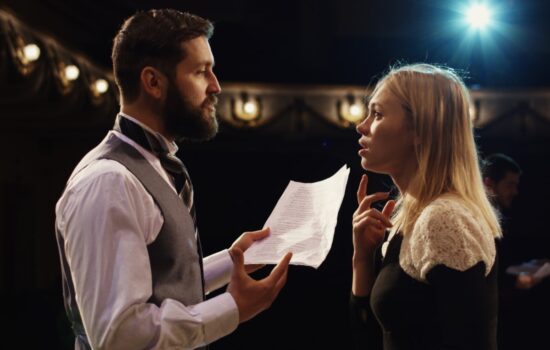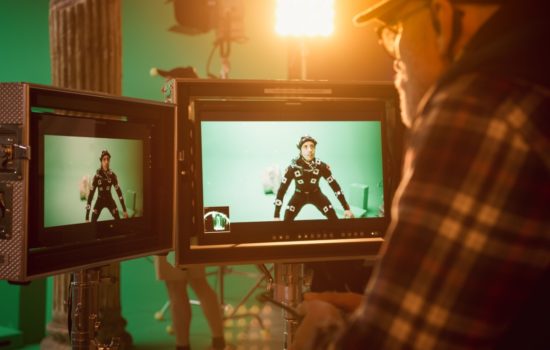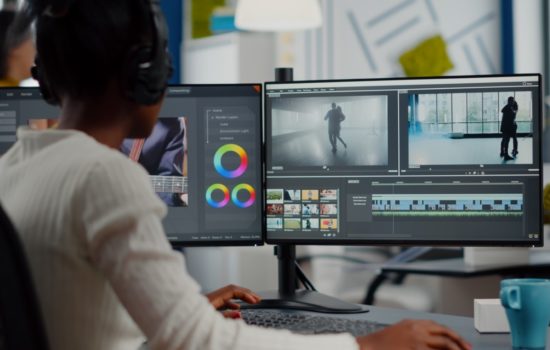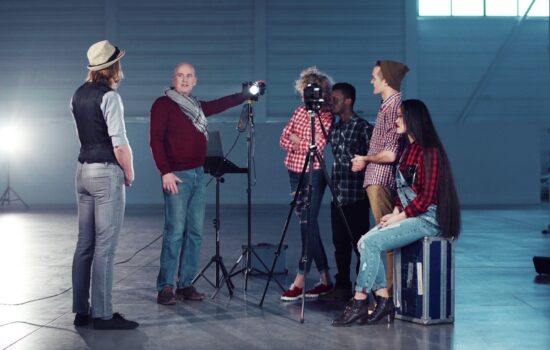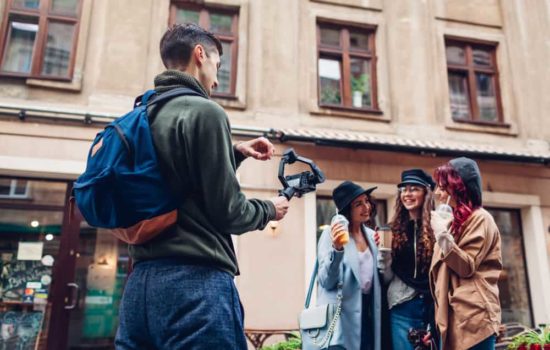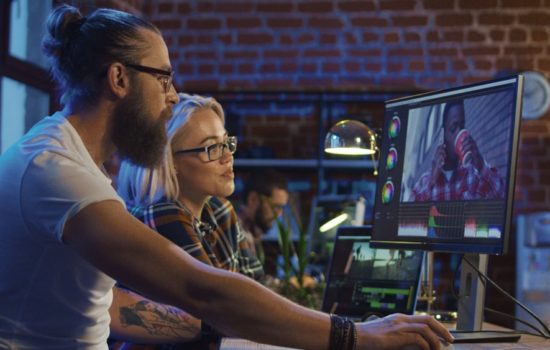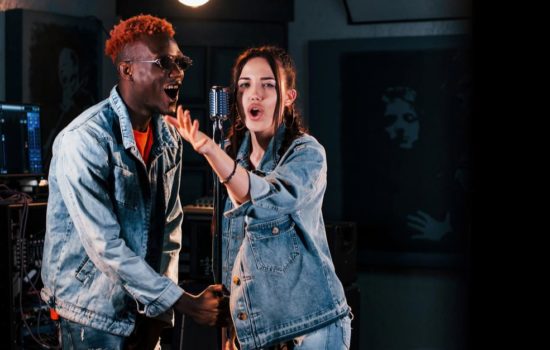On Set VFX Supervisor
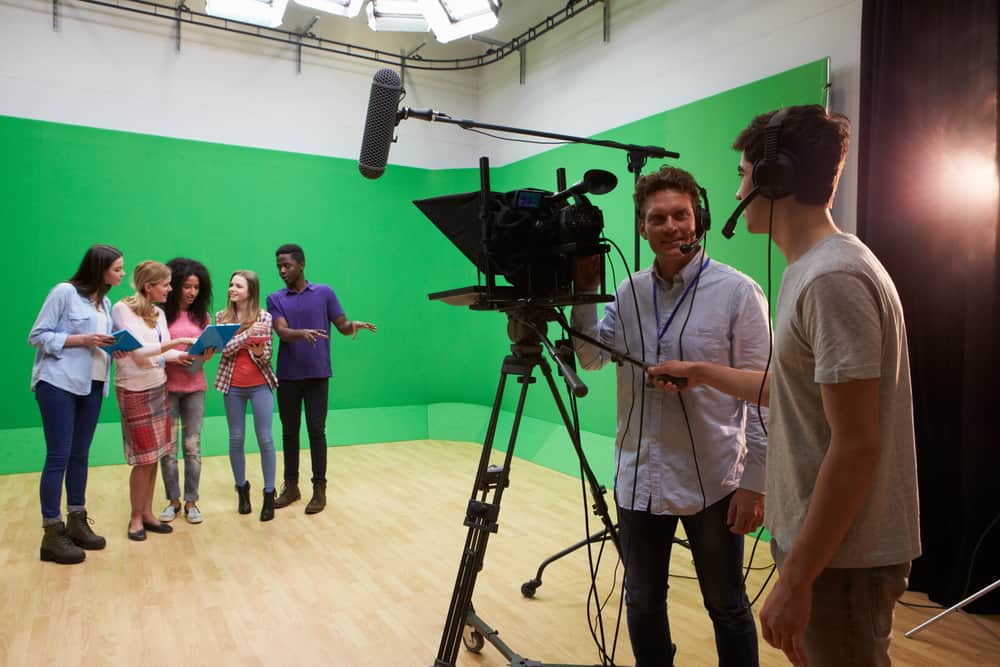
How To Become an On Set VFX Supervisor
People also ask
Career Description
For On-Set VFX Supervisor Geoff Leavitt, a typical day begins with an early morning so he can get to set before production begins. Once he arrives, he’ll check in with the Assistant Director and view the script sides — sections of the script — to determine what that day’s schedule will be.
He’ll also meet with the Director, Director of Photography and 1st AD to both find out what they need and discuss what he in turn requires to make those shots happen. Says Leavitt, “I’m not there to step on their creativity, but rather to help them make the shots look better.”
Throughout the day, Leavitt might also check in with the talent or Executive Producer, all while talking to the post-production and editorial departments. There’s a lot of multitasking, as Leavitt is fielding calls, returning text messages and sending emails. Constant communication is key as “you need to make sure no one is waiting on you.”
Also, if Leavitt needs to step away from the set, it’s crucial that he informs the crew so his whereabouts are known at all times.
What does an On-Set VFX Supervisor do?
An On-Set VFX Supervisor carefully oversees the execution of every shot that will require visual effects in post-production. They ensure that what is captured on set can be altered appropriately for the film’s VFX needs.
Salary
The average annual salary for an On-Set VFX Supervisor is approximately $140,500. The salary range for an On-Set VFX Supervisor runs from $59,000 to $225,000.
In describing the income situation for an On-Set VFX Supervisor, Leavitt explains that it can fluctuate depending on the project. Unfortunately, some productions decline to hire a seasoned professional who would come with a higher rate in favor of a less experienced person. In many cases, the money saved in this move is spent on more hours and fixes needed because of the lack of expertise.
That being said, Leavitt states that there’s “no real full-time” position for an On-Set VFX Supervisor. An On-Set VFX Supervisor might technically be salaried, but they’re also an independent contractor on a given production. Because of the rate disparities, as well as the lulls that can sometimes occur between jobs, Leavitt adds that going into this field is “not for the faint of heart.”
Hey, what do you think about trying our new Film Career HelperFilm Career Helper really quick? It’s totally free and could help get your career moving fast! Give it a try. It’s totally free and you have nothing to lose.
Career Outlook
Leavitt notes that the life of an On-Set VFX Supervisor means getting up before the sun rises and coming home after it has set. In short, the days can be long, so aspiring On-Set VFX Supervisors should be aware that they may not have open weeknights. And while many productions run five days a week, others might add in a sixth day on the weekends.
He also mentions that the lifestyle of this profession is one of “feast or famine.” At one point, he went for more than a year without work. Other times, he must turn down jobs because he’s already committed to a project. Sometimes, as on a film, that project might last for only a few months.
It can also go for the better part of a year, as is often the case in television. Leavitt adds that television, in particular, can be a great way to “cut your teeth” on the craft. Turnaround times are quick, making it essential to work not only competently but also quickly.
As mentioned, Leavitt’s job typically entails collaborating with a wide range of other professionals. He’s regularly in communication with both editorial and post-production crew, as well as other on-set figures such as the Director, Director of Photography and 1st AD.
What does a VFX Supervisor need on set?
To make sure that those shots are executed as needed, a VFX Supervisor needs to have all information in hand regarding what visual effects the Director, Cinematographer, and Producer want for the film. Only by knowing exactly what the expected final look of a shot is can they determine if the footage has been shot correctly.
Career Path
Leavitt entered college with aspirations of becoming an Architect. But as he puts it, he “got bored” and switched over to graphic design. He always had a passion for creature effects, so he also started working in this field. After graduation, Leavitt landed a job at Disney where for the next five years he did design and animation.
From there, he went to Warner Bros. to animate on a web series. All the while, he was teaching himself digital creature VFX. Says Leavitt, “I’m a forever learner and always striving to know more and do more,” which accounts for his next gig on CSI: Miami, which he landed without even having a demo reel. He was offered a job on the spot as a VFX Artist, where he eventually rose to Lead Artist and then VFX Supervisor.
Was it a typical path to becoming an On-Set VFX Supervisor? Leavitt says that it’s hard to say. He knows others like him who are self-made professionals, teaching themselves the craft. Other colleagues of his have taken the route of going to school specifically to study VFX.
Either way, he emphasizes that the most important quality for setting out on this path is to have a professional — and personal — drive. It’s great to be motivated to succeed, but he’s not impressed by those who work around the clock. He’s found that it actually can hinder productivity, which is why it’s also important to know when to step away for the day.
As far as getting a foot in the VFX door, Leavitt recommends starting with post-production jobs that teach basic skills like rotoscoping or photo retouching. Learning foundational software like Photoshop can also be immensely helpful. Like he mentioned earlier, getting on YouTube to learn and keep growing skillsets is key as well. Other entry-level jobs that can begin a person’s career in VFX include being an Intern or Production Assistant.
- Watch “behind the scenes” filmmaking commentaries.
- Subscribe to Cinefex and other VFX publications.
- Study animation and anatomy, which can be important skillsets for VFX professionals.
- Get familiar with popular software like Photoshop, Blender and Gimp.
- Don’t be afraid of math and science, especially geometry and physics, which are used in the field.
Experience & Skills
Leavitt is a VFX generalist, which means that he can lead a project from concept to final delivery. But he’s quick to add that generalist expertise isn’t necessary for success in the field. Plenty of people have specialties, whether that’s matte painting, 3D animation or another skill. According to Leavitt, it’s more important to have a good sense of spatial thinking.
“You should be able to see a shot in your head and be a creative problem-solver. In many ways, we’re like the Sherlock Holmes of the entertainment industry.” Because many in the industry, including Directors and DPs, can find it difficult to visualize a VFX shot, it becomes especially important for someone in this field to have that skill and be able to articulate it to others.
It cannot be overestimated how important it is to have a level head in this field. Says Leavitt, “No matter how someone treats you — and there will be difficult personalities that you encounter — you have to let it roll off your back.” Reacting in like to a hot-headed personality will never have a positive outcome. Likewise, it’s critical to be able to take criticism without taking the note personally. Just listen. Adds Leavitt, “Don’t hold on to negativity.”
Education & Training
Outside of a traditional college or university, YouTube can be a vital resource for someone aspiring to become an On-Set VFX Supervisor. Says Leavitt, “Watch the tutorials and demos to learn and stay up-to-date. Don’t settle for okay.” That also means learning about different kinds of VFX software, some of which can be downloaded for free.
Leavitt doesn’t believe that a future On-Set VFX Supervisor needs a degree, just a desire to work hard and push past their comfort zone. That being said, a college education can be helpful in more intangible ways. Leavitt states, “School is important for social growth and learning how to be an adult in the real world.”
How do you become an On-Set VFX Supervisor?
To become an On-Set VFX Supervisor, you must have comprehensive knowledge of how visual effects work – but not only on a computer. It takes considerable experience being on set to understand how a shot using green screen can become an asteroid hitting the surface of the earth (or another kind of shot in need of VFX). That means building your resume with post-production VFX work, as well as time spent on productions during principal photography.
Additional Resources
No union currently exists for VFX professionals, but that doesn’t mean there aren’t resources for aspiring On-Set VFX Supervisors!
The Visual Effects Society (VES) has plenty to offer aspiring On-Set VFX Supervisors on its site. While the organization requires at least six years in the field and two recommendations from current members to join, it can still prove a valuable resource.
Leavitt also recommends going to networking events. Go to meet other professionals — and ask questions! It’s okay to approach seasoned VFX pros and ask about how they got into the field.
FAQ
What is the single biggest suggestion you would give to someone wanting to get into this career?
“Don’t give up. No matter how rough it gets, stay the course,” answers Leavitt. While it’s not an easy path to follow, it can be highly rewarding. Says Leavitt, “If you have the will and determination, you will succeed.”
What’s the #1 mistake people make when trying to get into this career?
Leavitt states, “Thinking that this profession will be a cakewalk.” When a person on the path to becoming an On-Set VFX Supervisor forgets humility, that’s when they can get into trouble. Adds Leavitt, “Don’t let ego take control.” Instead of talking about one’s skills or expertise, prove it on the job.
What is the question people should ask about this career but rarely do?
Leavitt admits that this particular question is a difficult one to answer, as he himself entered the world of VFX later in his career. In his experience, the question that’s most often asked is “How do I get started?”
If you could describe in one word what makes you successful, what would it be?
“Desire.”
Sources
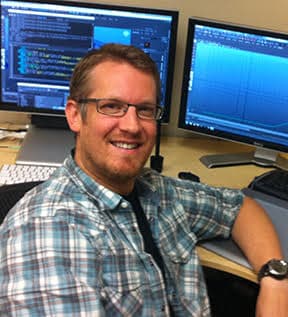
Geoff Leavitt
Visual Effect Supervisor Geoff Leavitt, a native of Los Angeles, grew up immersed in the entertainment industry. After finishing up undergrad in animation and visual arts, he landed at The Walt Disney Company where he was a Designer. After leaving Disney, Leavitt went to Warner Bros for a short time before realizing that he had a bigger calling.
From there he started a creature effects studio called Cinemorph Effects Group. While there, Leavitt designed characters, creatures, bodysuits, animatronics, stop motion puppets and prosthetics for various TV shows and feature films.
In 1999/2000, he turned his attention to visual effects.
He’s been a part of projects. such as Dallas, Longmire, Zookeeper, Grownups, Bucky Larsen: Born to Be a Star, From Prada to Nada, Area 51, Mirrors, Paul Blart: Mall Cop, The Grudge 3, Bedtime Stories, Punisher: War Zone, Basement Jack, X-Men: The Last Stand, Terminator: The Sarah Connor Chronicles, Knight Rider, CSI: Miami, CSI: NY, NCIS: Los Angeles, The Good Wife, The Big C, Prison Break, 3lbs, Vanished and countless others.
Leavitt has supervised and run visual effects departments for several companies before realizing that in order to really make an impact in the industry, he needed to start up his own studio.
He was one of the co-founders of Nitrous Visual Effects, based in Calabasas, CA and has since gone independent. His recent work includes Point Break (remake), ShadowHunters, MacGyver, The Fix, It’s Always Sunny in Philadelphia and 9-1-1.
Current and past projects: 911, It’s Always Sunny in Philadelphia, The Fix, Unit Zero, MacGyver, Half Magic, ShadowHunters, Point Break, Road Run, Dallas, Longmire, Major Crimes, Area 51, The Good Wife, CSI: NY, Warrior, NCIS: Los Angeles, Swelter, Julia X, From Prada to Nada, Ghosts/Alien.
As well as: Grown Ups, Zookeeper, Born to Be a Star, Pandorum, Paul Blart: Mall Cop, Mirrors, Hotel for Dogs, Monsters Vs Aliens, Punisher: War Zone, My Best Friends Girl, X-Men: The Last Stand, CSI: Miami, Knight Rider, Terminator: The Sarah Conner Chronicles, Prison Break, Vanished, 3Lbs, Cold Case, Criminal Minds.
Leavitt is a member of the Art Directors Guild.
References
- 1. "VFX Supervisor Salaries in United States". Glassdoor.com. published: December 14, 2019. retrieved on: November 29, 2016
